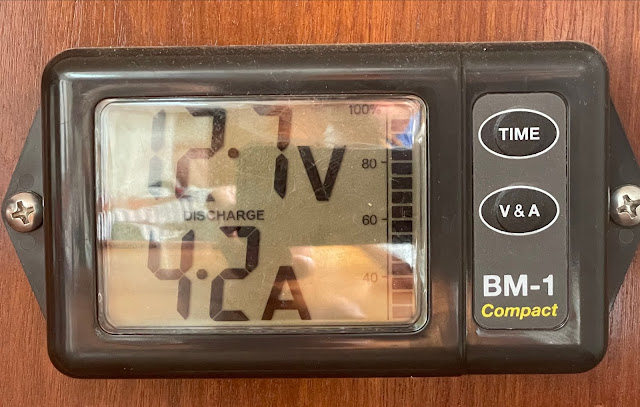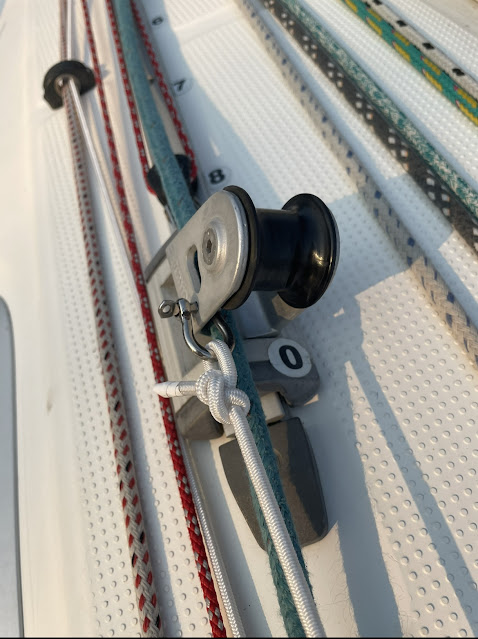Masthead nav lights revisited

Several years ago, I posted about adding a MarineBeam mastop LED nav light. That post is HERE . Over the years, people have asked about the wisdom of having nav lights mounted at mast top. More specifically, they wonder if the light is too high to be seen close in, allowing boats to avoid you. To help address this, here is a picture of BlueJ taken at dusk, with some light still left in the sunset behind us.The MarineBeam LED nav light is so bright that it casts reflection all the way to the photographer's position. Viewed from 300 feet away, a mast top nav light 40 feet above the water is separated from a deck mounted light by less that 7 degrees of viewing angle. It is also clear of shoreline light noise that can clutter and obscure a deck level light. Off our bow is a boat with deck level lights. They are hard to distinguish from shore lights. These facts, combined with their clear advantage in open waters, make it the lighting of choice.




